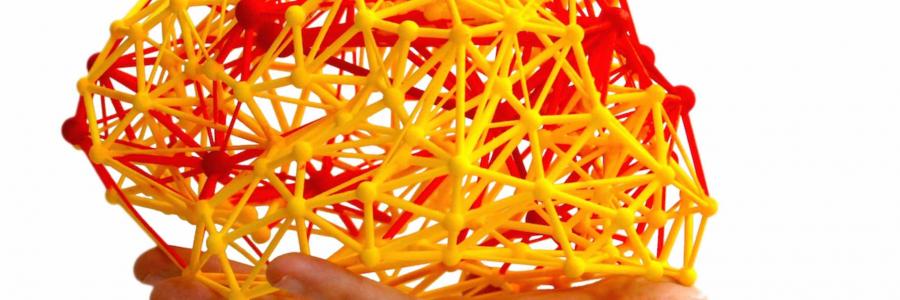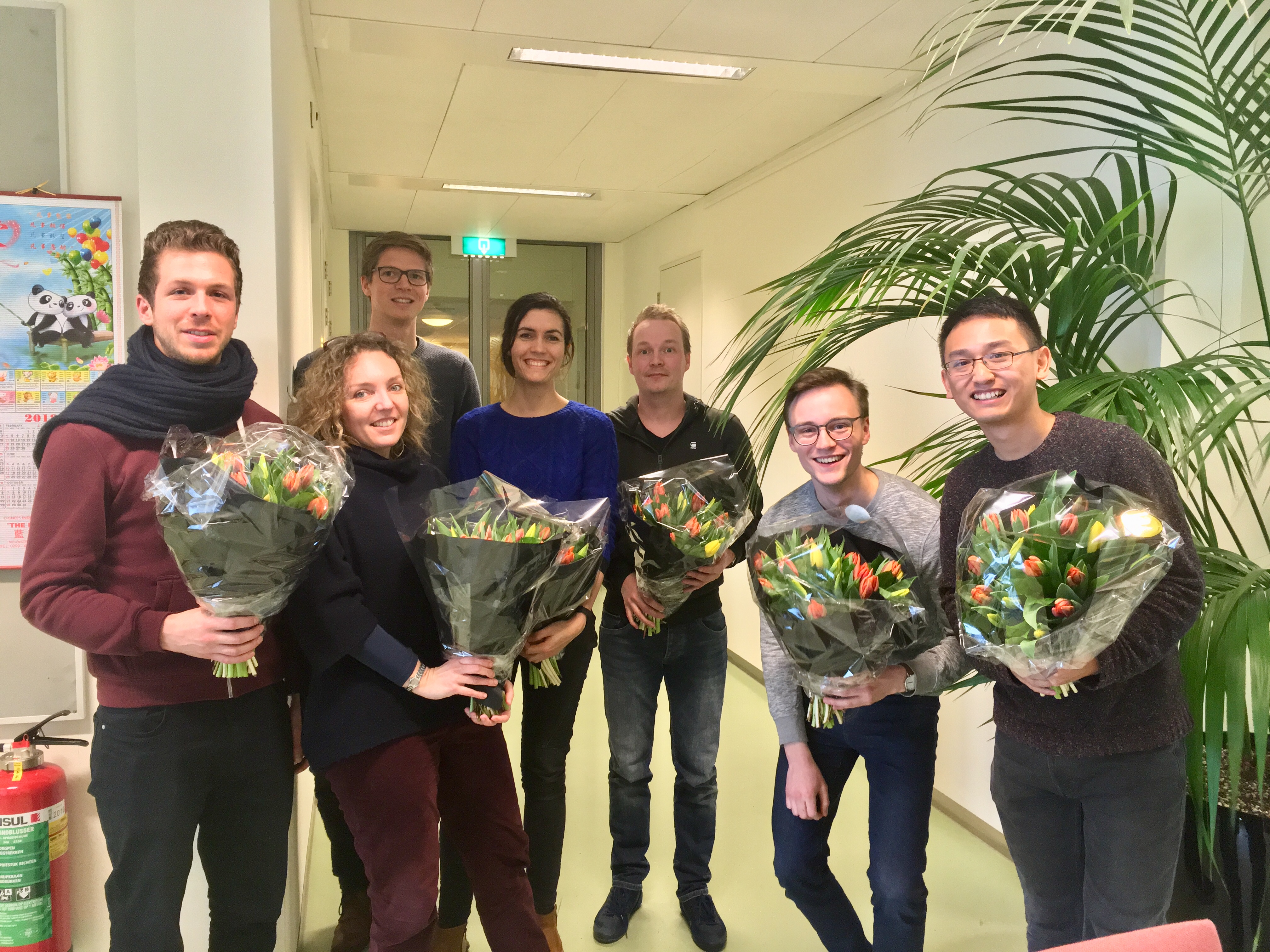
As of March 1, 2018 Martijn van den Heuvel has started as a new PI at the Department of Complex Trait Genetics of the CNCR.
Martijn van den Heuvel is a computational neuroscientist with a background in Data Science and Artificial Intelligence. In his PhD (Utrecht University, 2009) he worked on new methods for measuring and analyzing brain connectivity data from MRI. After his PhD he started to apply network science tools to examine the topological network structure of the human (and later animal) brain. He particularly worked (and works) on the so-called ‘hub’ and ‘rich club structure’ of the human brain, and how this type of brain connectivity may be disrupted in psychiatric brain disorders, like schizophrenia and bipolar disorder. His work focusses on unraveling the fundamental principles of wiring of the human brain — the connectome —, and how this complex ‘roadmap of connections’ may play a crucial role in brain function and disfunction. Martijn received a VENI (2011) and a VIDI (2016) for his connectome work and he was honoured as a highly cited researcher by Thomson Reuters in 2016/2017. With his team he bridges multiple fields of science, including computer science, biology, psychology and mathematics.
The CNCR is delighted to welcome Martijn and his team and is looking forward to exciting collaborations.
What does your research focus on?
My research focusses on figuring out the wiring structure of the human connectome. Our brain has invested more than 40% of its space and resources in white matter connectivity (the long range connections of our brain), which is in proportion more than that of our closest primate species. That is a lot?! Why is our brain wired like this, how did it get there, and how does this organization play a role in brain function and disfunction in disease? These are the topics we work on in our lab. We do this by analysing MRI brain scans in silico behind our computer screens, but in collaboration with the NIN/Hersenbank and with collaborators in several other labs around the world also in wet conditions.
What would you like to solve in the next 5 years?
Three goals. First, we are looking for a link between macroscale network properties of the human connectome and neuronal properties at the microscale level of nervous systems. In particular, we want to examine how centrally connected hub areas of the brain have a distinct cellular architecture that make them suitable to deal with high levels of neuronal processing. Two, we want to look for general vulnerabilities in the human brain. Are some places (hubs?) more vulnerable to damage than other areas of the brain, and how does this relate to neurological and psychiatric brain disorders? Three, we work on the evolutionary background of the human connectome. We want to find overlap and potentially unique properties of the human connectome compared to that of other primate species, and how this development has played a role in the development of (unique) human behaviour.
Why did you move to the CNCR?
One of the core properties of our work is to work on scientific questions that are at the border of multiple fields of science. In is our nature to expand and bridge disciplines: linking macroscale connectomics to genetics, to evolutionary biology, to cell biology, to electrophysiology recordings, to tract tracing, you name it. With multidisciplinarity in its DNA, the CNCR is a fantastic place to do this. It is an opportunity for me and my team to learn about new fields, and vice versa to further apply network and complexity science to a wider field of neuroscience. In particular in the department of Danielle (Posthuma) there is a unique opportunity for us to learn and work on linking connectomics and genomics.
Who are the people that moved with you?
In numpy.random.permutation() order: Yongbin Wei, Lianne Scholtens, Siemon de Lange, Rory Pijnenburg, Alessandra Griffa, Dirk Jan Ardesch. (the solution is 4-5-3-2-0-6-1).
Yongbin Wei — PhD-student, background in computer science, interested in linking connectomics and genetics
Lianne Scholtens — postdoc, background in biology and cognitive neuroscience, interested in multiscale and comparative connectomics
Siemon de Lange — PhD student, background in mathematics, interested in cross-disorder disconnectivity
Rory Pijnenburg — PhD student, background in biomedical sciences and neuroscience, interested in bridging cell biology and macroscale connectomics
Alessandra Griffa — postdoc, background in biomedical engineering, interested in integrative aspects of brain structure and function
Dirk Jan Ardesch — PhD student, background in neuroscience, interested in comparative connectomics
